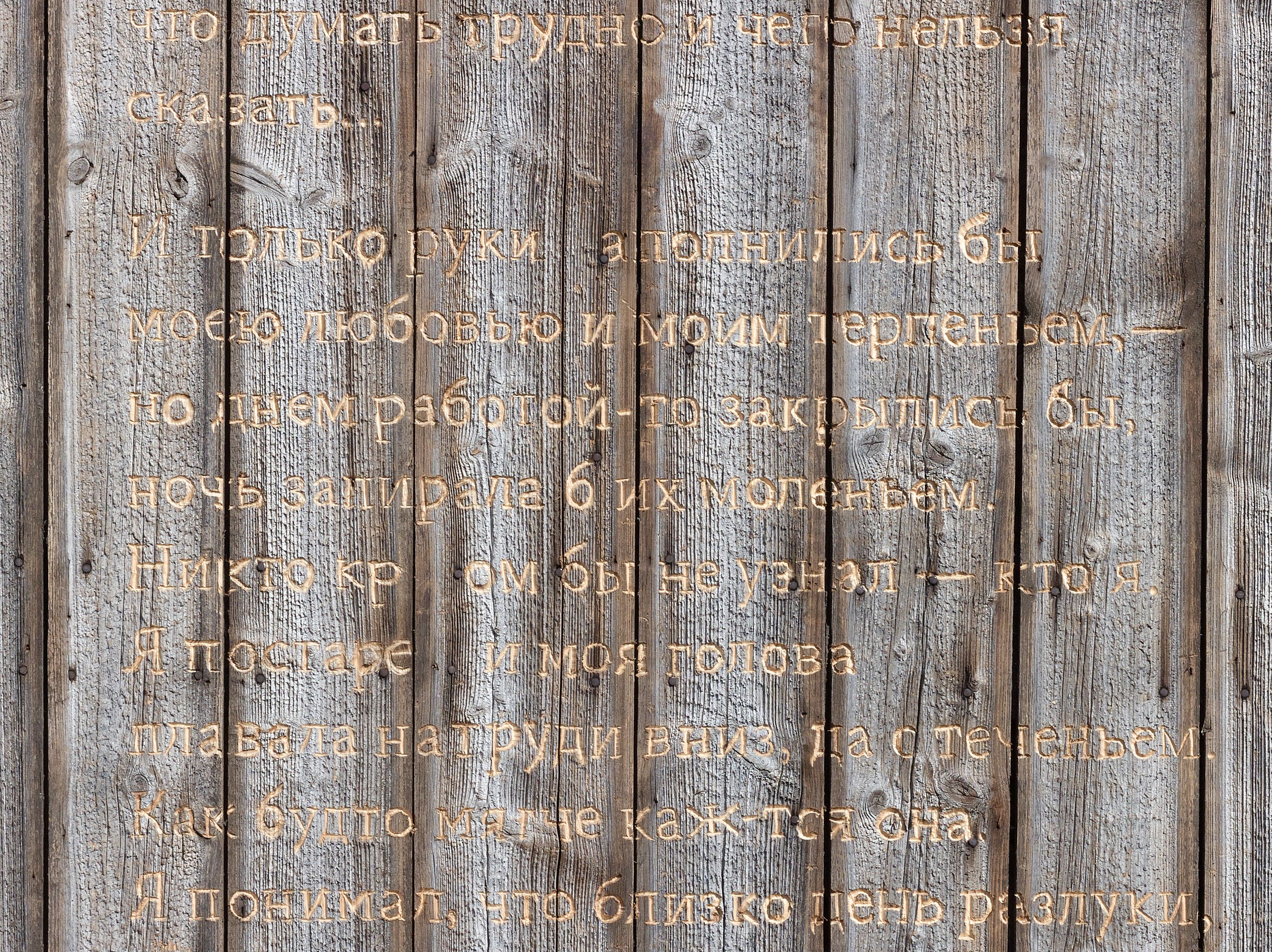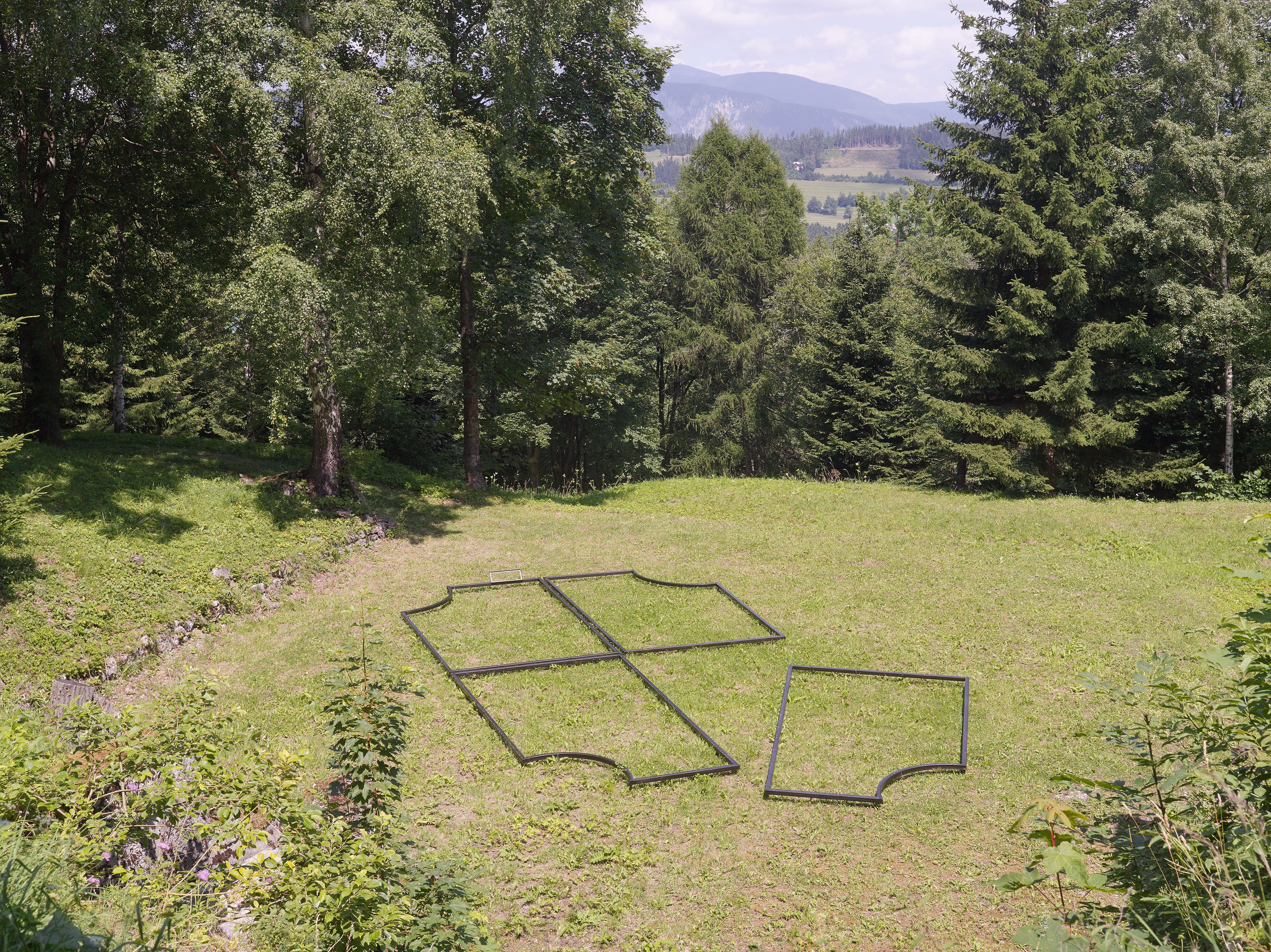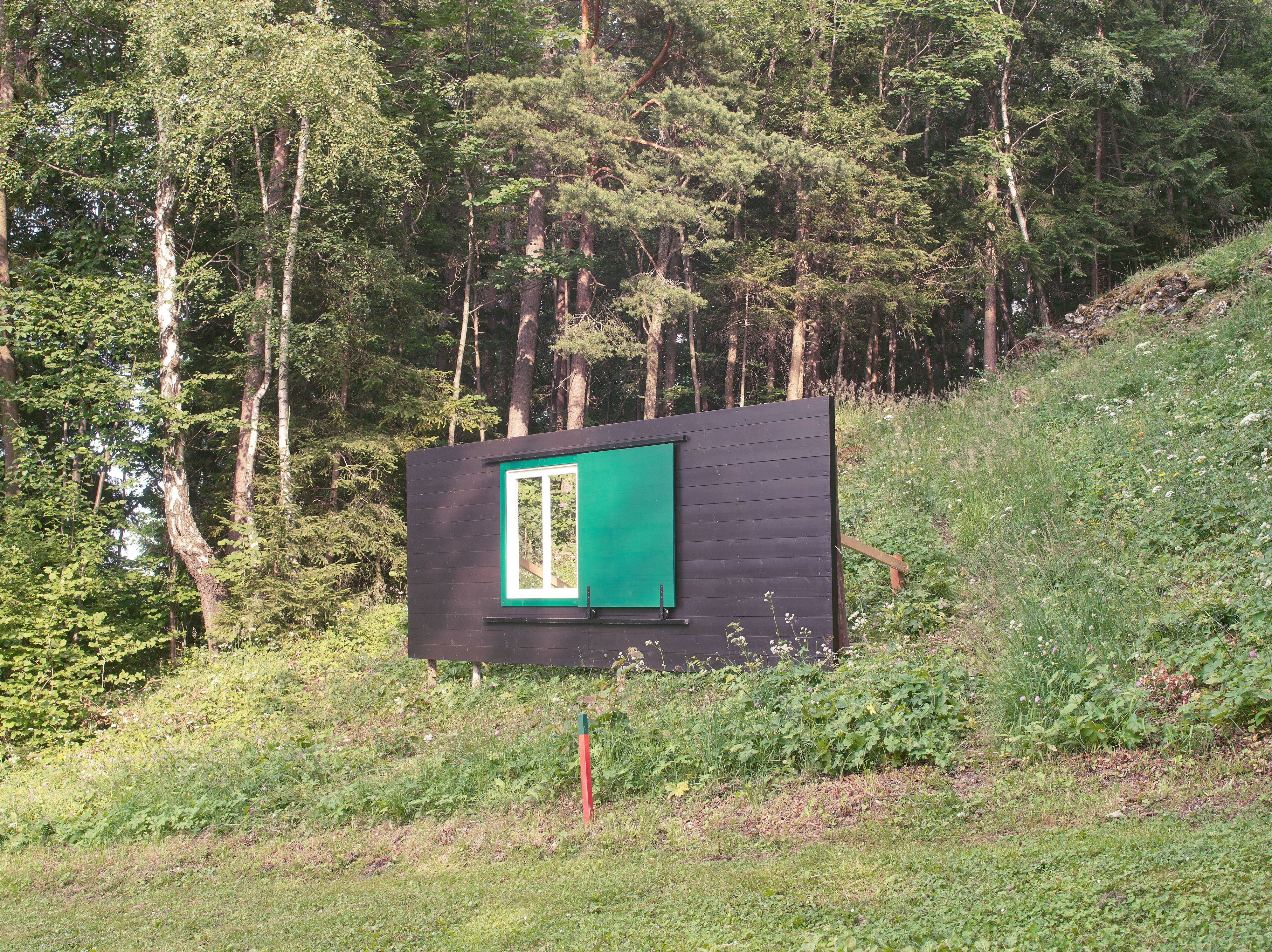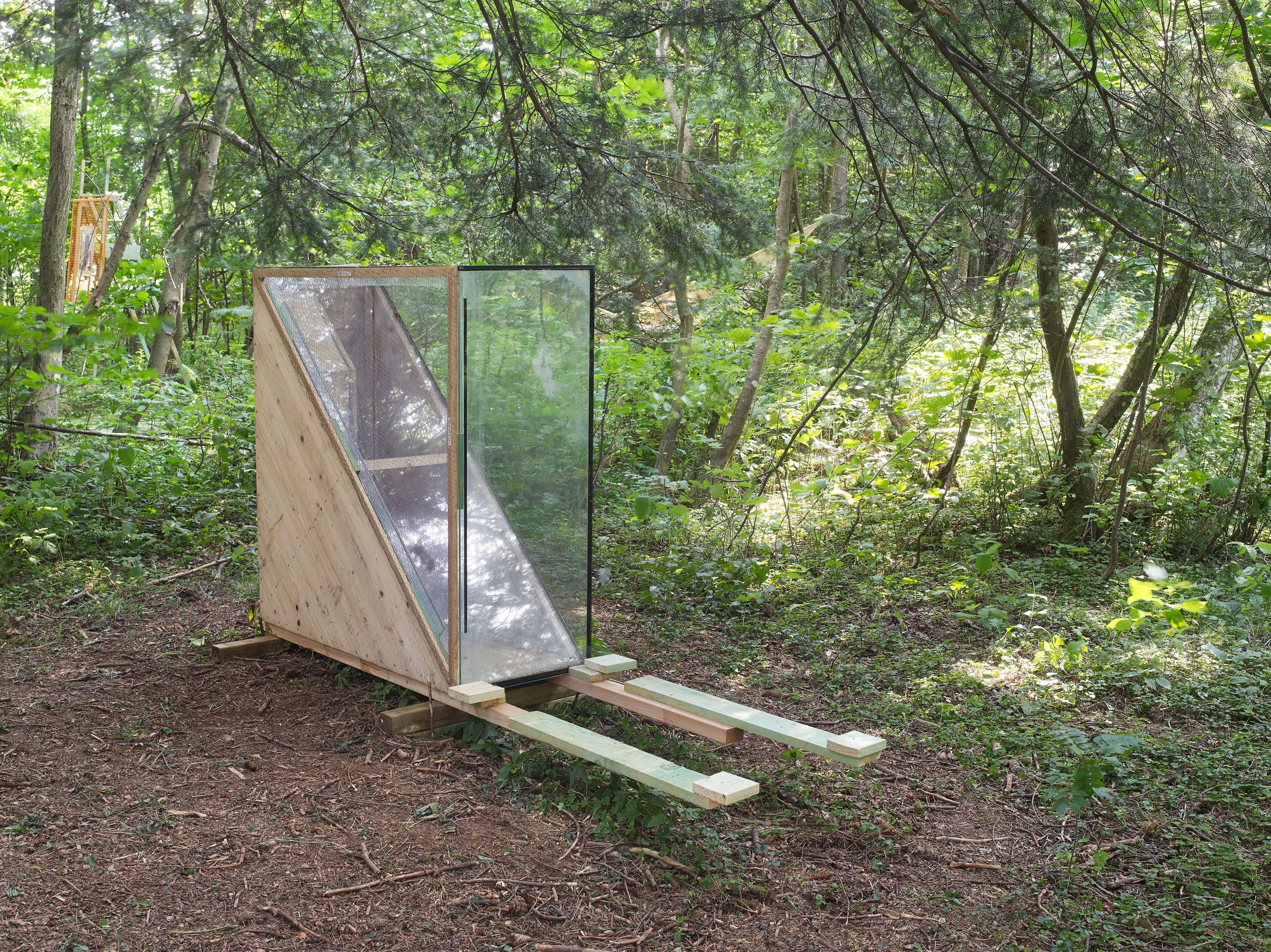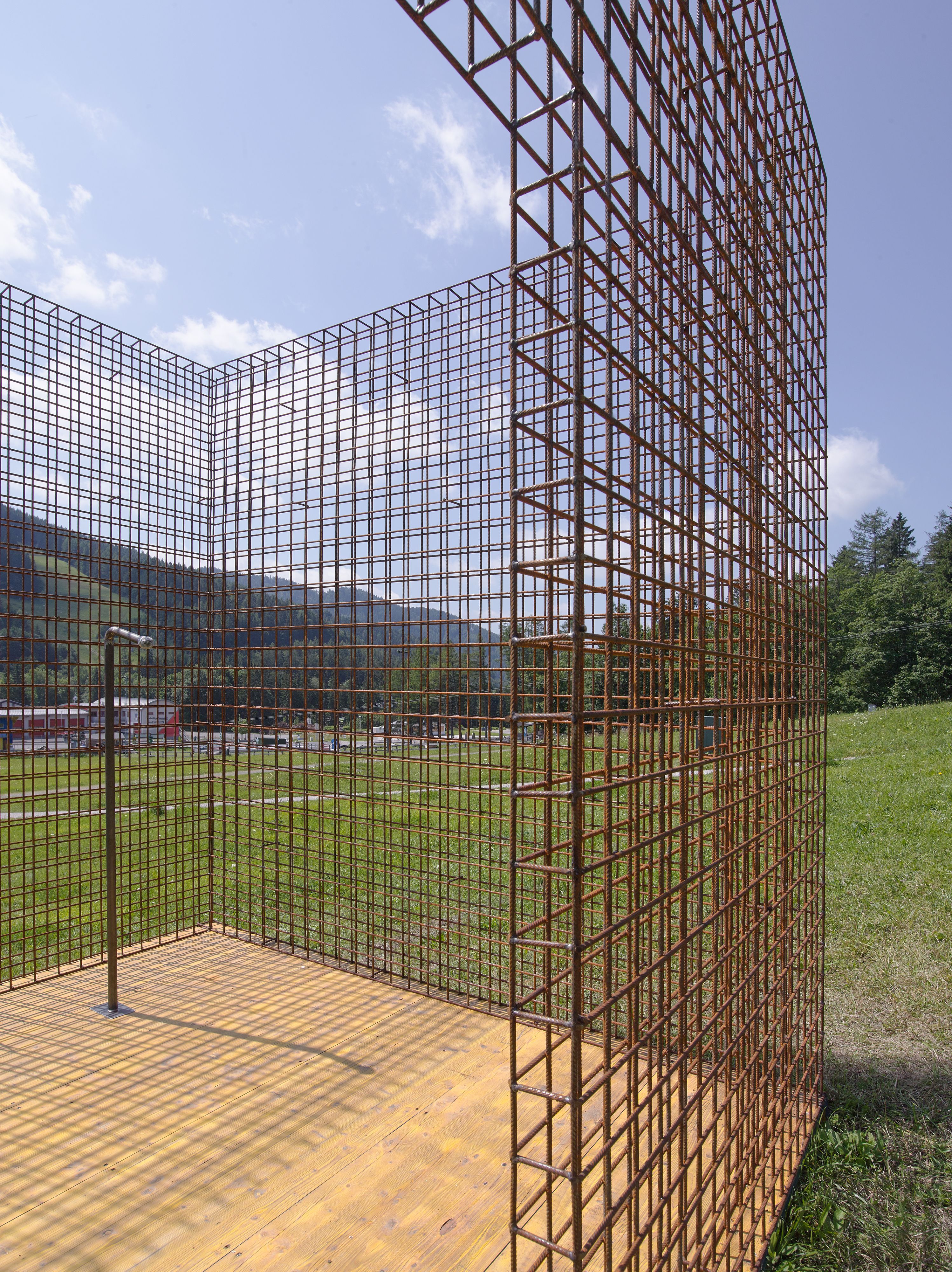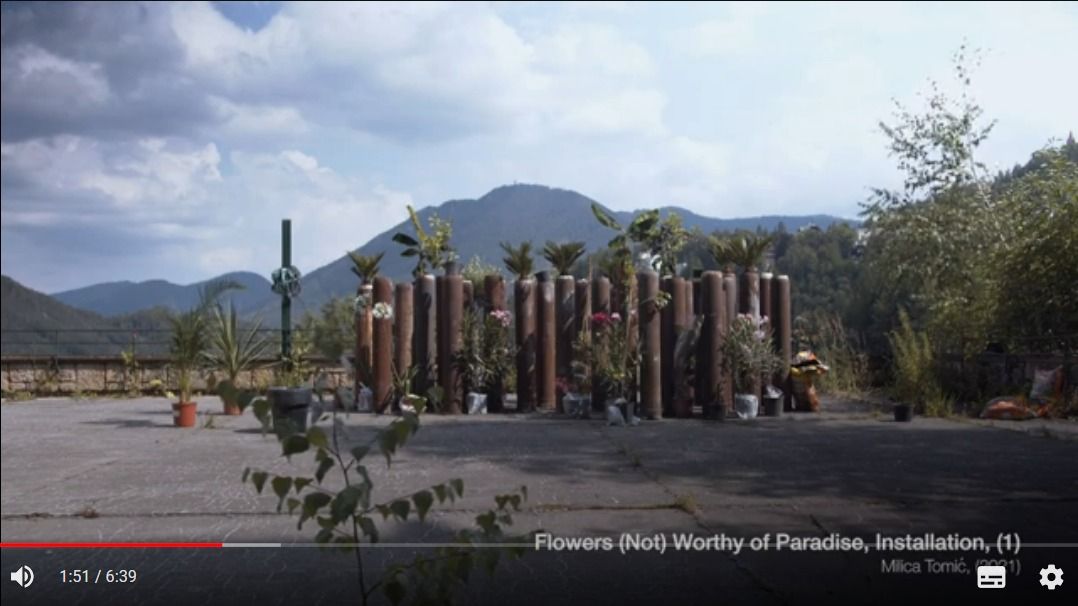Land, Besitz und Commons
BackArtists
- With
Information
In the social and cultural history of the Semmering area, there have been many ups and downs in the economic growth and social prosperity since the famous railway made it easily accessible almost 170 years ago. It all began when the railway company laid the tracks and the alpine landscape was developed into a picturesque setting often characterized by a bourgeois culture of leisure. Nature became »tamed« as the city expanded into the landscape, bringing with it all conceivable luxurious amenities. The decline in the area due to wars, the Shoah, and major social and geopolitical changes has transformed it. In its long history, the tourist landscape has time and again been confronted with the consequences of social transformation, or it has reached its limits, or sometimes an economic boom turned into a recession. It is a place that was originally appropriated by aristocrats, industrialists, and well-known intellectuals, offering them amusement.
In the course of democratization, it became increasingly used by a broad spectrum of day trippers. Since the Semmering railway was declared a UNESCO World Cultural Heritage site, the region has come into focus again. The Semmering is a landscape of superlatives and means something different for every visitor and for every era. The title of the outdoor exhibition of contemporary art spread over the Semmering area Land, Besitz und Commons (Land, Ownership and Commons) may at first seem both terse and labored. But by putting the multifaceted history of the Semmering aside, it poses questions about the significance of »land« today as a section of the Earth’s surface with its own unique nature and aspects. It points to the characteristic combination of fauna and flora, climate and geological features, as well as the human interventions that lend a landscape its appearance. Our present day and age is defined by a precarious relationship to nature. Our dependency on technology thwarts all romantic ideas, and we always see the landscape through the lens of all the contemporary images we have seen before. How do we approach these directly accessible images of nature, the »staged views,« and the »overabundance of ideal perspectives« on site? Have these bizarre rock and mountain formations been downgraded from places of romantic ideals to mere marketing tools for tourism? What can visual art achieve in such a dense cultural mesh of past and present?The sensorium of art consists of seeing, visualizing, researching, and analyzing. The materialization of experiences leads to sculptures, installations, and/or performances.
What we consider to be the Semmering landscape has long been structured around the standardized views it offers. Nothing is left to chance. In some places, the growth of nature is kept under control for the sake of the views, which are framed and served to the tourists to look at. The view of each artist, however, tries to counter this. It is transformed into an artistic medium, trying to elevate the concepts of nature and culture to a contemporary level beyond the dichotomy of nature and culture, while also working with current scientific paradigms. It opens up another perspective on the world (and this is more than a cliché) where we no longer see ourselves as something independent from and opposing the Earth we live on. The »ownership« in the title refers to the lack of clarity regarding the demography in the Semmering area and the structural problems that are connected to this. This situation is due not only to people moving away, but also to the fact that, a few decades ago, several of the grand hotels and mansions were sold has second-home apartments. The »commons« in the title, which points to the future, is used in many contexts and means common property, with an emphasis not on the property, but on a social construction that is based on political decisions. It represents a call to create autonomous spaces that exists outside of capitalist structures in order to »re-enchant the world.«
In the case of Semmering, what could such enchantment mean? The approach suggested by the artists is »appropriation, exploration, selfobservation, presence, and being present—also in a broader political sense. It is about a playful approach that questions fixed viewpoints.« The various paths in the Semmering area—many of which run parallel, crossing through different properties—form a robust and dense network that leads to special views, while sometimes picking up small, insignificant things from the wayside. We are almost tempted to say that the paths in the Semmering area are themselves »commons.« They let us experience the Semmering directly as a contemporary landscape, as we walk from artwork to artwork. These paths are the second theme of this outdoor exhibition. It is this connection between human and non-human spheres that can be found in the works of the artists who have been invited to explore the situation of Semmering in different ways.
Project descriptions: Ada Karlbauer
Contributors
- Kuration
Contributions
Milica Tomić
Flowers (Not) Worthy of Paradise
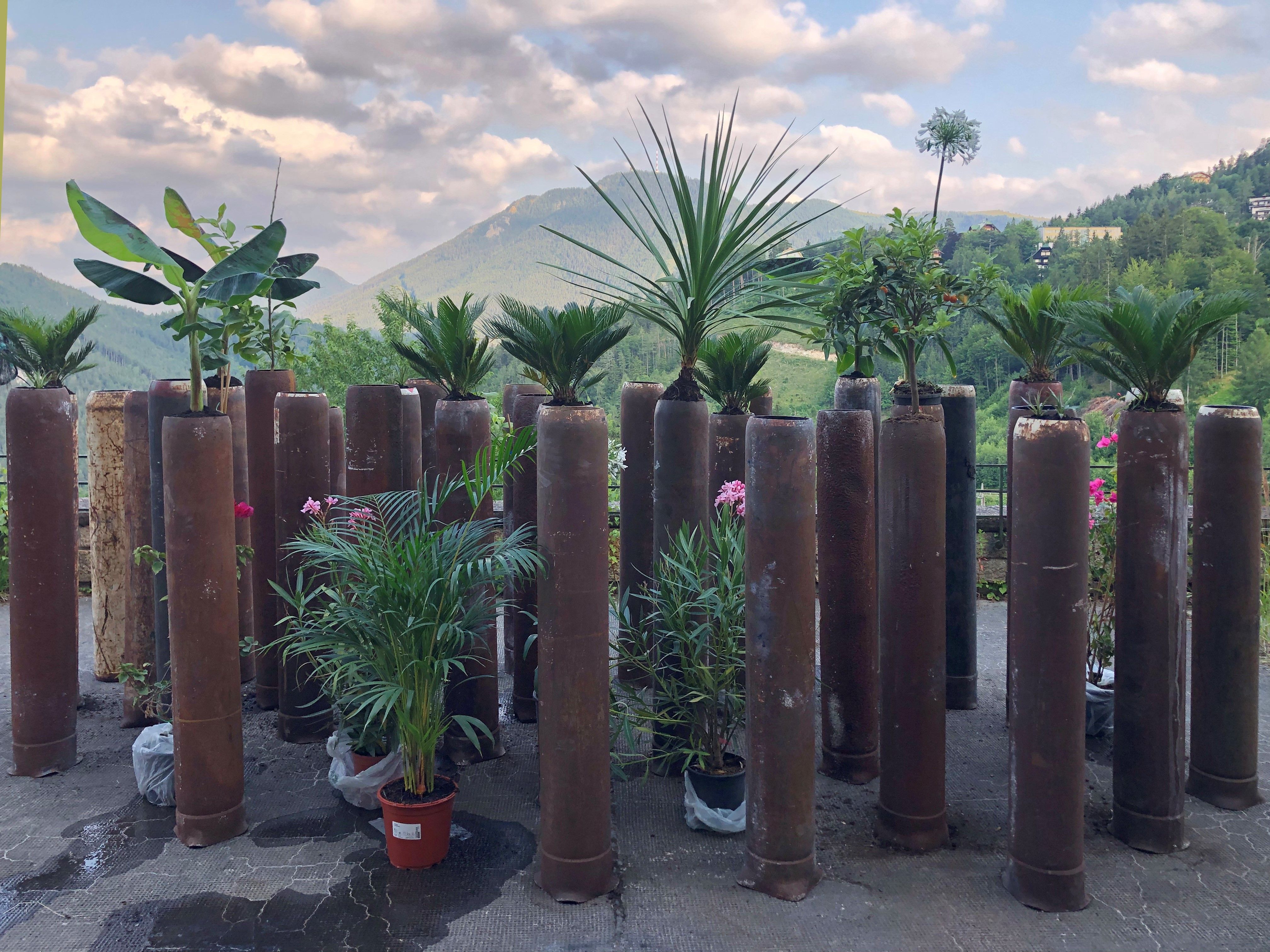
Flowers (Not) Worthy of Paradise, 2021
Installation with pots and plants
Semmering is more than just a backdrop. When we look at the landscape, we see overlapping motifs. The nature surrounding Semmering is sublime, rich in history, resembling a postcard. In her work Flowers (Not) Worthy of Paradise, Milica Tomić explores the relationship between those who came and those who left. Who was forced to leave, and whose land was occupied? The installation revolves around gardens as a form of resistance against colonial barbarism and enforced acculturation. Tomić directs our gaze beyond Semmering toward the world. At the invitation of Milica Tomic, Abdelrahman Elbashir performed “Planting a Stone during the opening of the exhibition Land, Property and Commons: he buried a boundary stone in a meadow. The background of Elbashir’s performance is his research about the materialized emergence of the political from the agricultural landscape in contemporary Sudan through histories of relational systems in the context of the British occupational rule. The act performed on Semmering draws attention to the 1953 British film "They Planted a Stone," and its depiction of "the arrival of the first European man the local people have ever seen plants a marker stone.' That moment marked the beginning of a new epoch of rapid change, that transformed the Gezira plain in central Sudan with the largest irrigated agricultural scheme in Africa. The performance was an instrument to read the history of Semmering as a history of human intervention in a landscape, and moments of arrival that marks the beginnings of its transformation through elements dispersed on it. A. Elbashir’s work will be exhibited in the “Annenstrasse 53” in Graz as a part of the central exhibition in Semmering. At the invitation of Milica Tomic, Anastasiia Kutsova prepared a contribution on aspects of the Ukrainian post-Soviet reality of communal gardens (ZHKH), which are embedded in the socialist housing complexes as "social forms“.
Tomić directs our gaze beyond Semmering toward the world. This was also explored by two of Tomić’s MA students from the TU Graz (Graz University of Technology) in their coursework: Anastasiia Kutsova shows how several aspects of post-soviet reality can be found in Ukrainian communal gardens (ZHKH) that are embedded in social structures, while Abdelrahman Elbahir’s research of agriculture in today’s Sudan unearths remnants of its colonial past. Elbahir’s work can be seen during the summer
months in the project space »Annenstraße 53« in Graz in connection with the Semmering project.
Olga Chernysheva
The Song
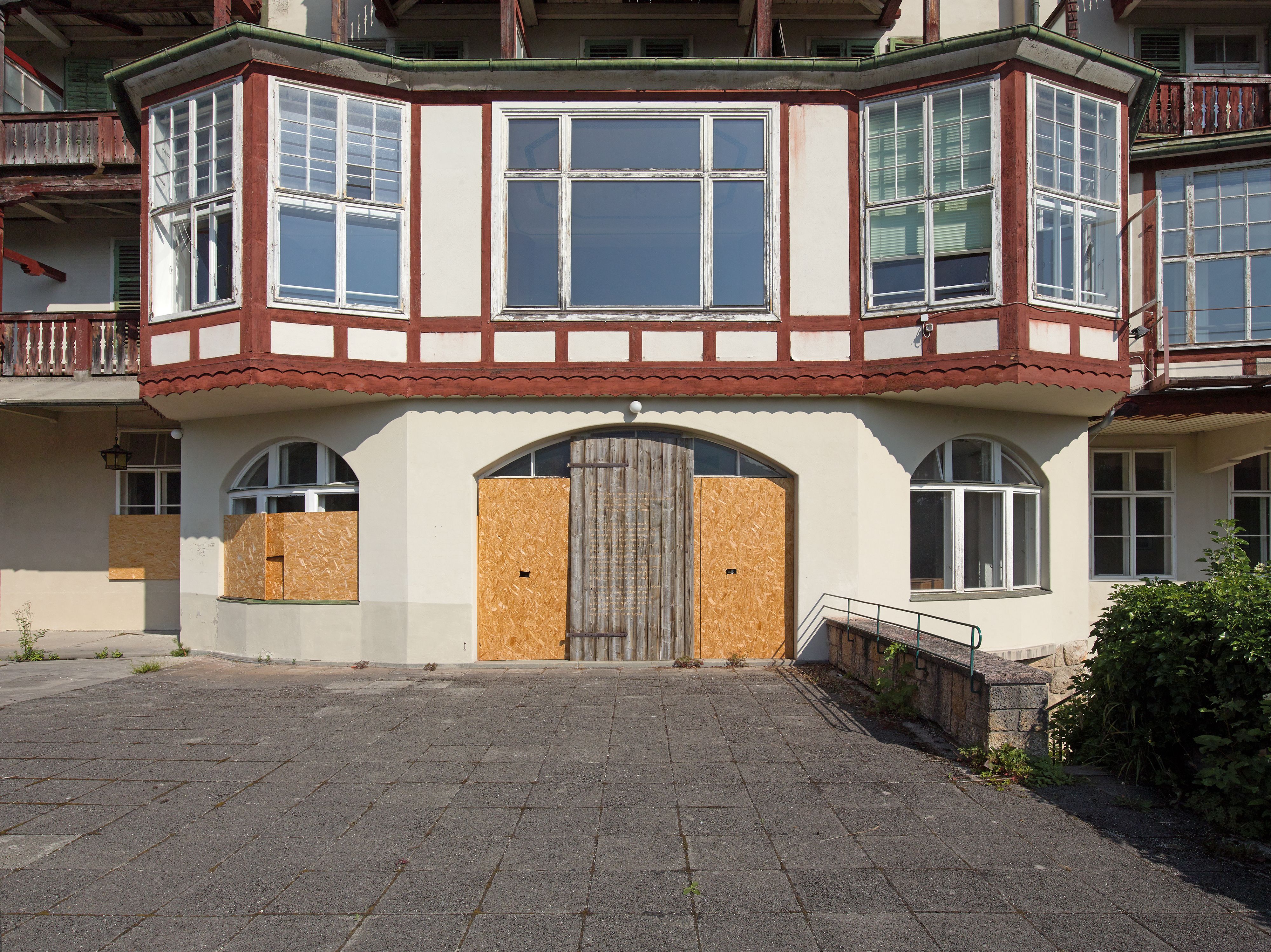
The Song, 2021
Installation, wood, engraving
The railway that still runs between Semmering and Trieste passes close bythe town of Duino, where Rainer Maria Rilke once stayed. The starting point of this work is a little known poem that Rilke wrote in Russian. The Face (Nikolaustag, 1900) is both a declaration of love and a farewell poem for Lou Andreas-Salomé. Because a German translation was never published, the poem remained absent from the German language. This installation is located below the iconic reading room of the former Kurhaus (spa resort), where many words have touched people’s minds. The Face is delicately engraved in Cyrillic letters in the wooden surface. Like a hidden secret, it can be felt with the fingers and understood by some. Rilke sounds different in Russian: His words are formed as if by a child and the imagery is of familiar and simple things. It is a poetic exchange between two mother tongues of syllables and words, oscillating between meanings and different ways of understanding. While no one knows for sure whether Rilke visited the Semmering, his words have now found their way here.
Anca Benera & Arnold Estefan
No Shelter From the Storm
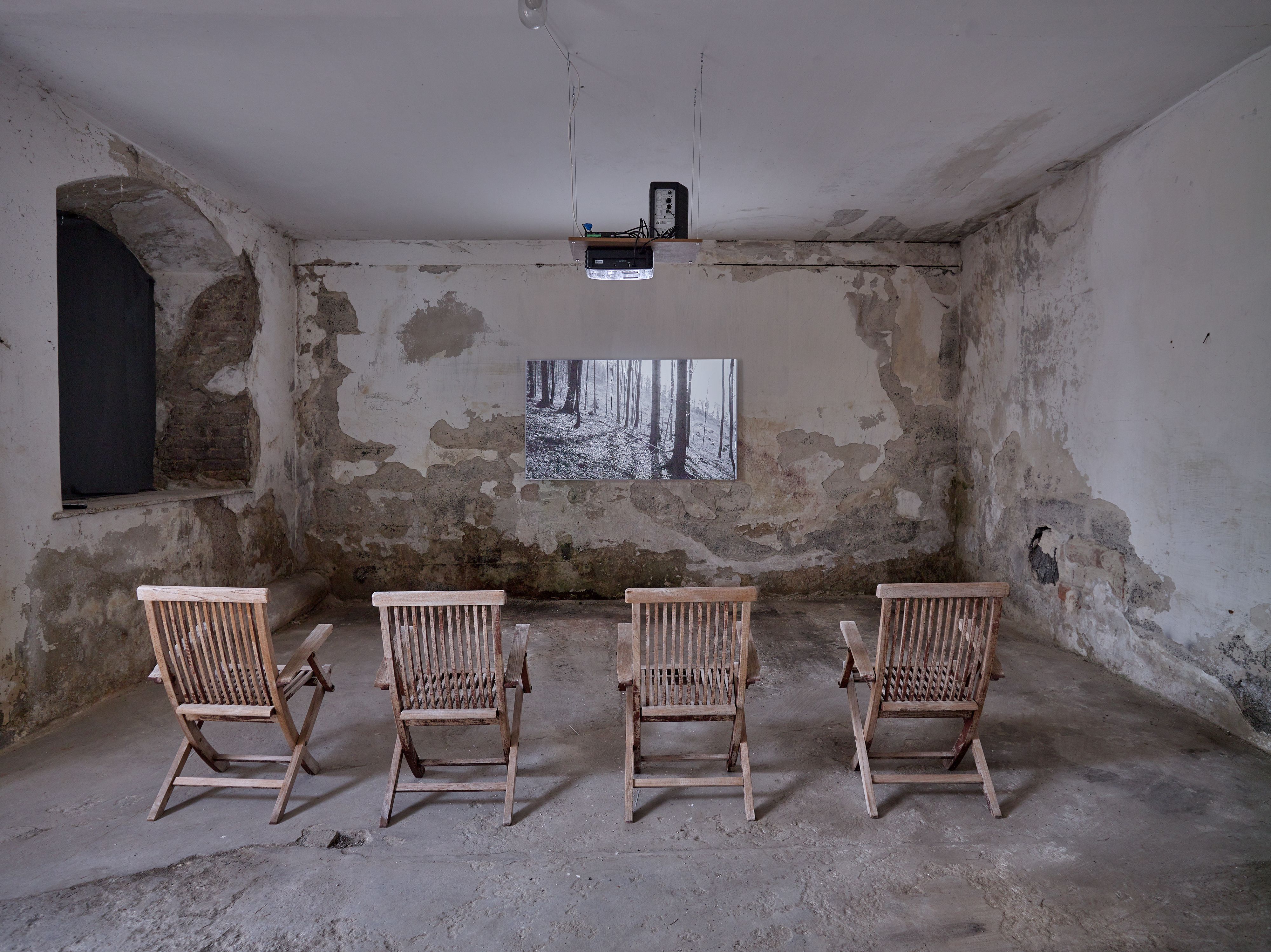
No Shelter From the Storm, 2015
HD Video, 5 min. 42 sec.
This film, which was made in the Carpathian Mountains, which is one of the last primeval forests in Europe. We can see felled trees, traces of destruction, and fallen branches, all in black and white. The artists walk through the damaged forest area in a mountainous landscape, accompanied by the often covered melody of »Where Have All the Flowers Gone?,« an anti-war protest song written by Pete Seeger in the 1960s. The song, which hovers above the treetops like a commentary, is based on a folk song of the Don Cossacks and is mentioned in Mikhail Sholokhov’s novel And Quiet Flows the Don from 1928. The video, which was made in the border area between Rumania and the post-soviet country of Ukraine while an armed conflict was raging there, also addresses how multinational corporations affect nature globally.
Inge Vavra
Schlagschatten
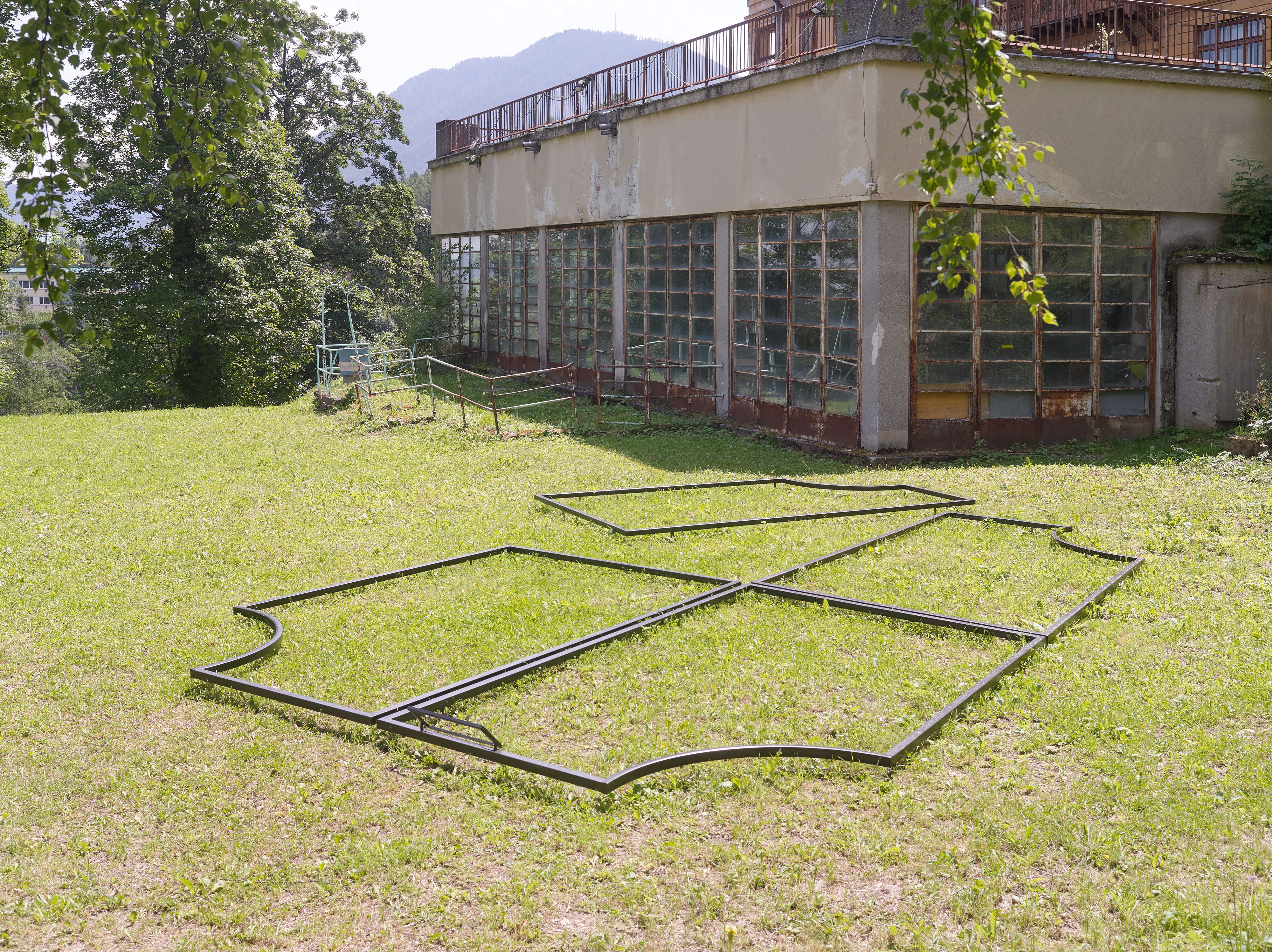
Schlagschatten, 2021
Sculpture, iron (810 x 462 x 10 cm),
mirror (20 x 50 cm)
A shadow is cast over a meadow on the terrace of the Südbahnhotel, facing the valley. Remains of a wall reinforce the green slope, which is covered with plants and resembles a park. Inge Vavra’s work Schlagschatten (Cast Shadow) is a construction made of square bars basedon historic garden labyrinths and foundations of Baroque buildings. Through her work, which is in the form of a quote and whose unusual materials mark a historical difference, the wall is transformed into a kind of backdrop.
A mirror is attached to the foundational construction, reflecting the surroundings in an anecdotal way. In the background, we see the soft yellow color of the hotel’s front. The image is determined by our perspective. Depending on whether we are looking at it from above or below, the constant elements begin to alter and change places. New spaces emerge in the grass, the sky is beneath our feet, and the surroundings are detached from their origins.
Zhanna Kadyrova
Second Hand

Second Hand, 2020
Ceramic tiles, 80 x 69 x 10 cm
Volatility, 2021
B/W Photographs
The temporary installation will be visible for three days, from July 24 to 26, at the water reservoir near Hotel Panhans
A towel can be seen hanging over a handrail in the venerable jewel of a swimming pool from the 1930s inside the Südbahnhotel. The towel, which is a light blue color with small details, seems to be frozen in movement. Made out of tiles taken from the Grössling Bath in Bratislava, the towel lends them a new form. Not only is the towel frozen in time, the balloons in the artist’s installation Volatility (8) also cannot rise. They can only hover above the water reservoir in a static formation. Because the Ukrainian artist’s two fragile sculptures located in different places are visible to each other from a distance, this creates a spatial relationship between them. While the »Second Hand« (5) installation is permanent, the helium-filled balloons are temporary and can only be viewed live on the day of the opening and the following two days, after which they will continue to exist only in photographs. Before they disappear, however, visitors can observethe balloons at a distance from various perspectives. The two abstract works focus on aspects of perception—something which they share in common with the Silberschlössl castle. The castle, which Viktor Silberer, a Viennese pioneer of aeronautics, had built as a home on the highest point of the Semmering, can be seen from the works below, creating a historical context that manifests itself in the landscape.
Laure Prouvost
Wantee
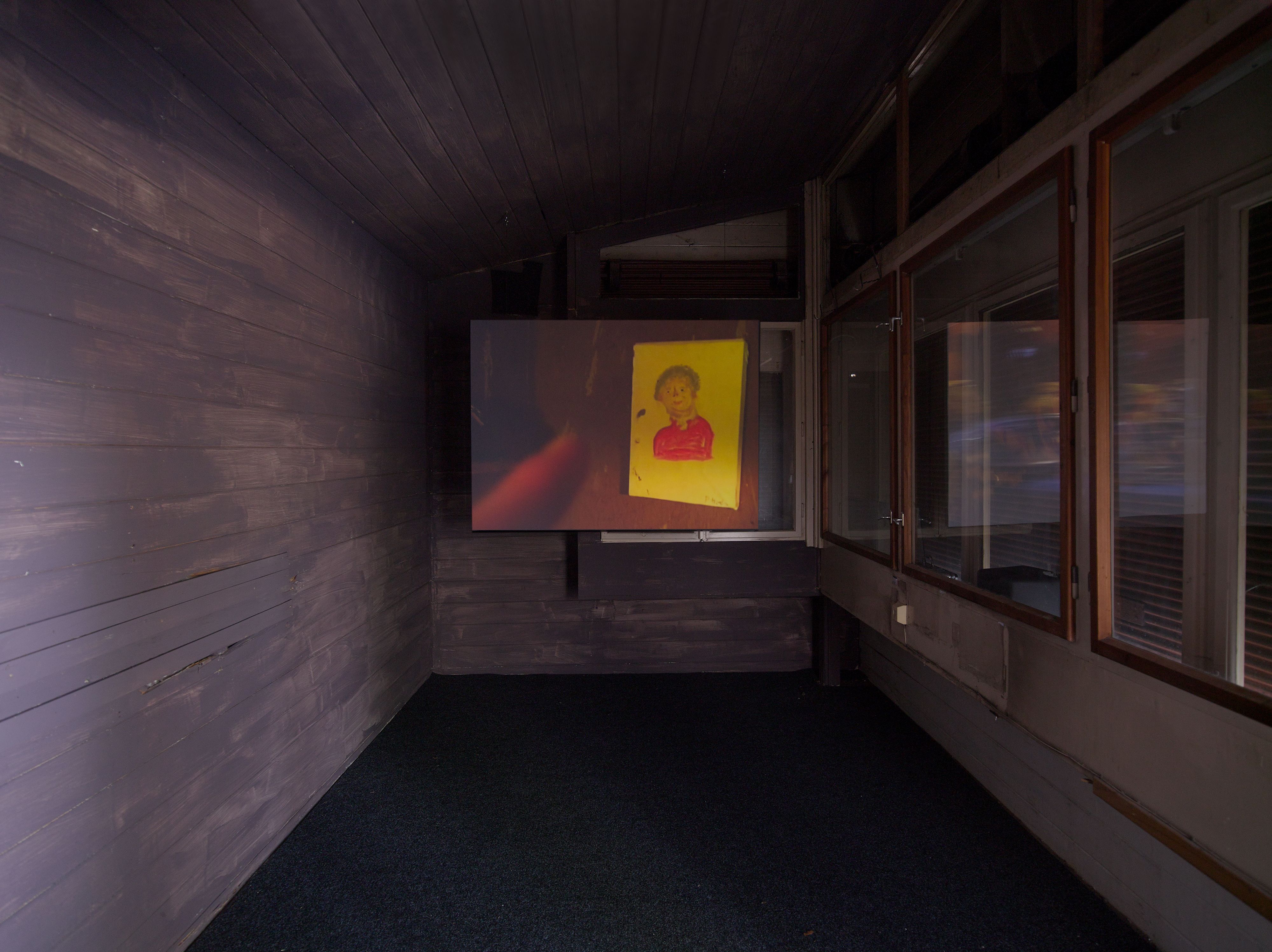
Wantee, 2013
HD Video, 14 min. 23 sec.
We see a dark, muddy room. Used dishes have been left on the table; tea was served long ago. Paintings hang on the walls of this room that time has befallen, like a faded photograph. This is the living room of a grandfather who never existed—a grandfather who was a conceptual artist and close friend of Kurt Schwitters’, according to Laure Prouvost’s description of her video work Wantee. The name of the video refers to Schwitters’ companion »Wantee,« whose nickname is derived from her habit of forever offering tea. The grandfather’s last conceptual idea was to dig a tunnel from his living room to Africa. He dug and dug, until one day, he disappeared without a trace. Through associative chains of images, the film sketches an intimate story that does not rely on real facts. It explores the reception of art over time, the loss of control that this entails, and how artists’ biographies are constructed. Facts and fiction melt into an alternative reality in this living room.
Hannes Zebedin
Die Loos-Schleuse

Die Loos-Schleuse, 2021
Wood (530 x 198 cm), various materials
The Khuner Villa in the Semmering-Rax area is one of a kind. It is one of architect Adolf Loos’ last projects and is architecturally very distinct from the surrounding buildings. Loos applied his pioneering idea of the »Raumplan« (literally »spatial idea«)—thinking in spaces and cubes, and not in plans—in this house. In Hannes Zebedin’s installation on the Semmering’s legendary alpine golf course, he combines modernism with traditional forms. For this installation, he rebuilt part of the mansion’s front, letting it stand like a kind of rampart on the slope. The window shutter system, which he took from Loos’s country house, regulates »streams« through its movement, opening and closing like ariver lock. In light of how industrialized agriculture has caused the disappearance of alpine forms of farming, Zebedin pays homage to these bygone times with a radial formation of forgotten haystacks and hayracks in his installation.
Zhanna Kadyrova
Volatilität
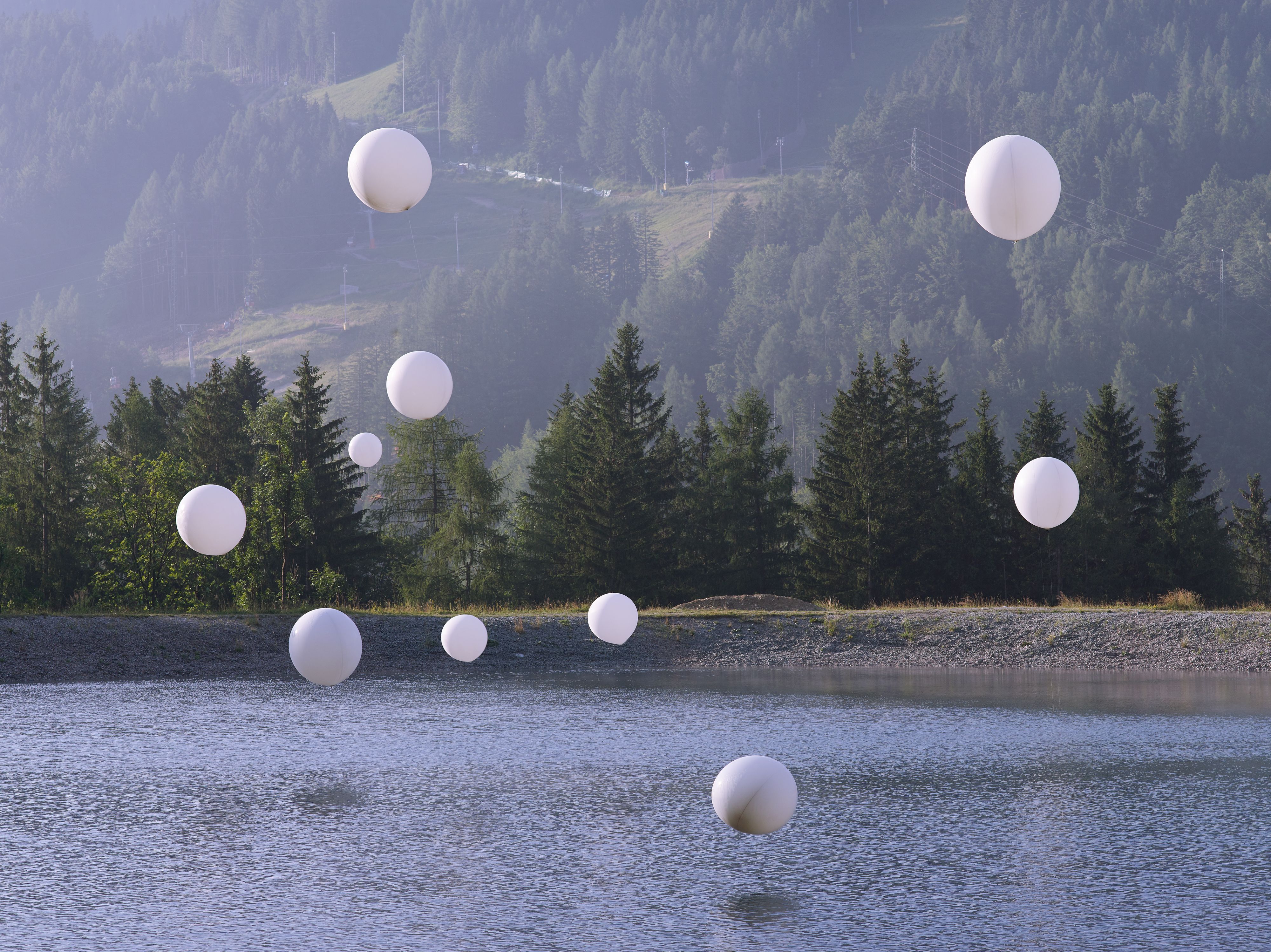
2021
Fotografie heliumgefüllter Ballons in verschiedenen Größen
(die 3-tägige Installation der Arbeit ist von 24. bis 26. Juli 2021 am Eisteich (in der Nähe des Hotel Panhans) zu sehen)
Die Installation ist kurzlebig, nur zwei Tage noch nach der Eröffnung ist sie zu sehen. Bevor sie verschwinden, sind die Ballons in der Ferne von verschiedenen Blickwinkeln aus erkennbar. Dann sind sie, nun in Bewegungslosigkeit, nur in Form einer Fotografie festgehaltenAbstrakt geworden thematisieren die Arbeiten Momente der Wahrnehmung. Ganz oben, am höchsten Punkt des Semmering, hängt das Silberschlössl in der Landschaft – erbaut für den Wiener Luftfahrtpionier Viktor Silberer, blickt es herunter und schafft einen historischen Zusammenhang, der sich in der Landschaft manifestiert.
Mikhail Tolmachev
Wo wir stehen – weit entfernt
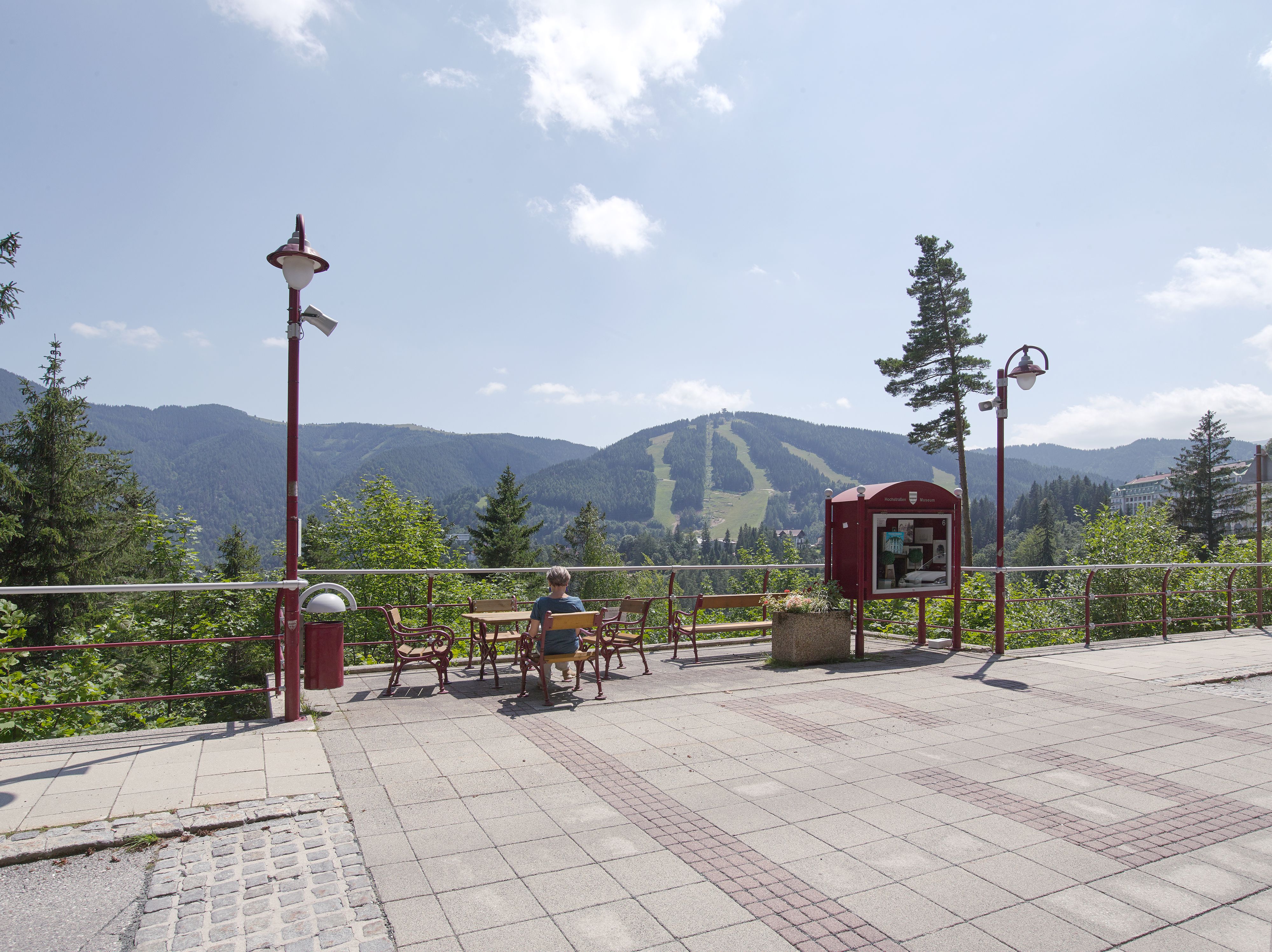
Wo wir stehen – weit entfernt (Where we stand – far away), 2021
2 sound installations with dialogue at the observation platforms on Hochstraße (the panoramic road), 5 min.
We look through a window that we can only see in our mind. It could be anywhere where there are meadows, mountains, and roads. Our eyes scan the landscape, following the serpentine road. The view we see is different from the one we hear. In Mikhail Tolmachev’s sound installation, he describes images without pictures. His words let us see a different landscape unfolding. His work addresses how the understanding of nature has changed and become manifested in the landscape. This nature was made—everything was made at some point—but now it appears as if it has grown naturally. On his »Vienna balcony,« the different views from windows begin to correspond with each other, creating a new view in our minds.
Titre Provisoire
Uncertain Geographies
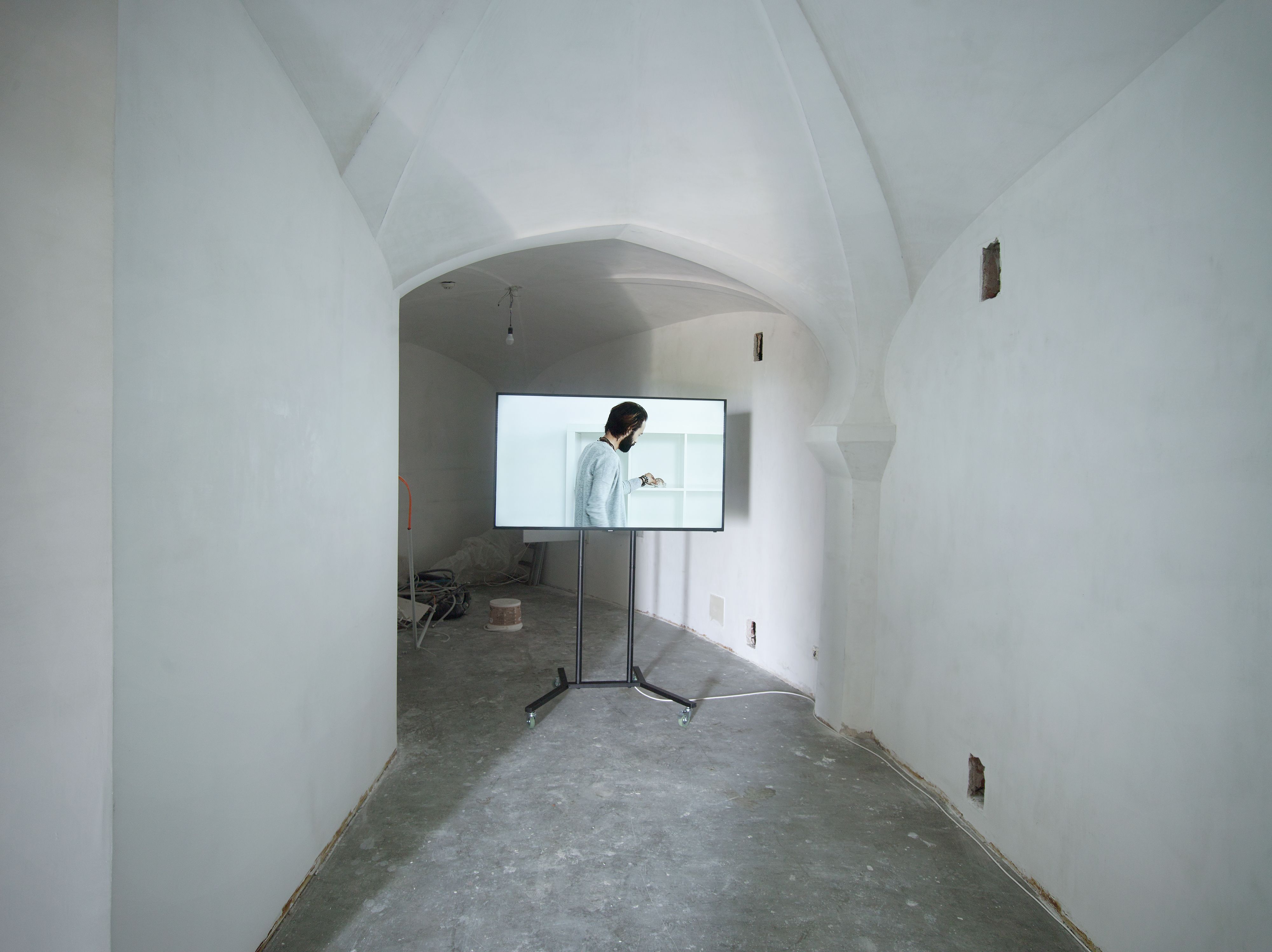
Uncertain Geographies, 2015
Video-Installation, HD Video, 15 min.
The video Uncertain Geographies tells the story of a landscape that is buried deep in the sediments of memory. Two performers try to materialize the physiognomy of a landscape that is not accessible in reality. Using digital geo mapping, the geographies of the Donbass and the Crimea are redrawn and explored. The work addresses forms of appropriation and withdrawal, expressing an artistic desire to liberate a landscape from the consequences of sovereignty. A dance segment referring to Stravinsky’s Rites of Spring breaks with the part of the film based on language, establishing a connection between the Rites of Spring and the digital »storage space of all memories« in which dying as well as remembering represent a recurring conflict.
Abdul Sharif Baruwa
Wohin das Auge fällt
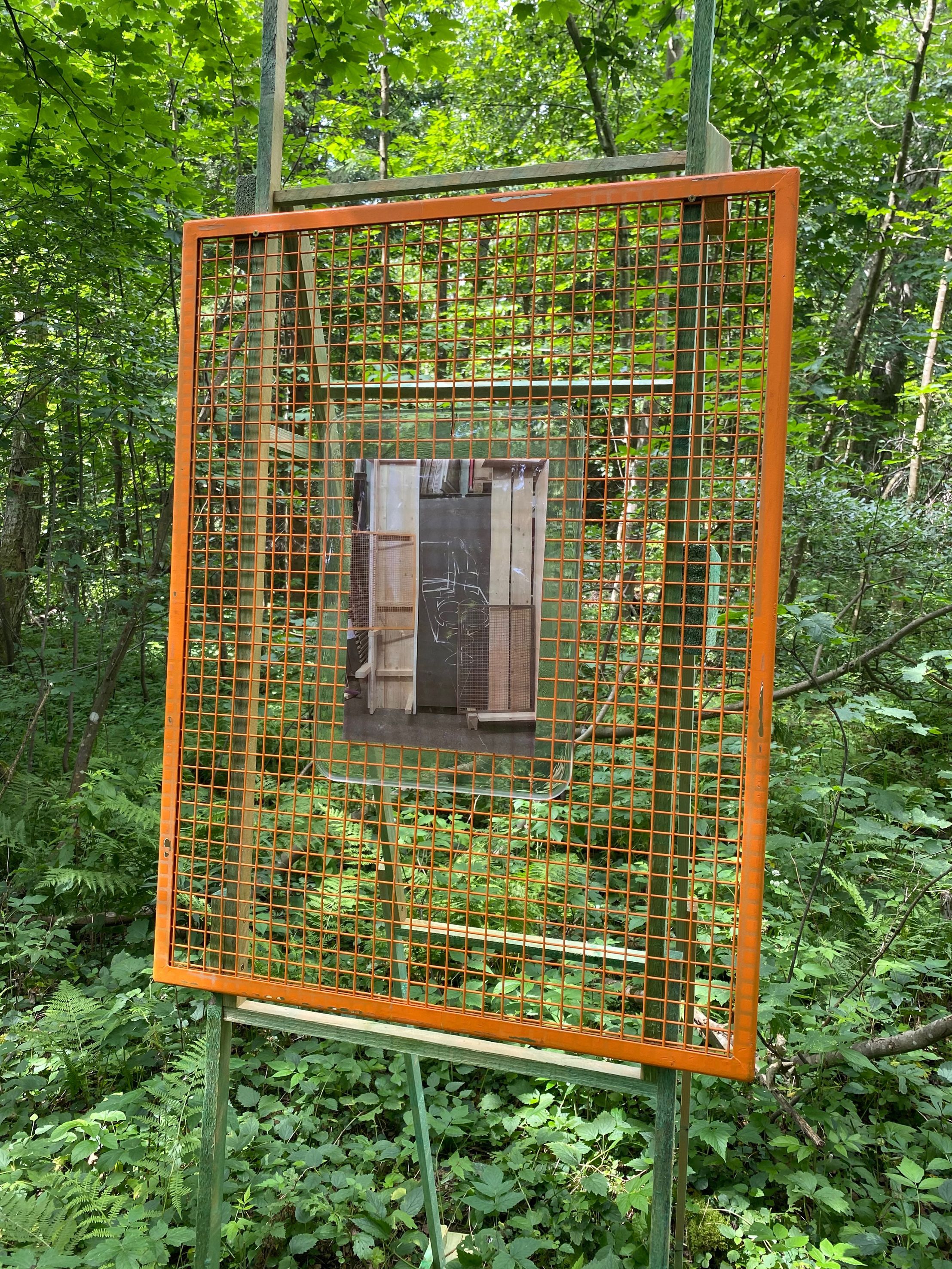
Wohin das Auge fällt (Wherever You Look), 2021
Installation, various materials
After many sketches, the perspective changes, but the place and the form remain. Abdul Sharif Baruwa works with what he finds on site—with what he notices. He begins with painterly sketches that replace each other, are stacked, and ultimately permeate each other. He creates ideas that are later manifested in a spatial form. It is almost as if we are watching someone think, but after the thoughts already occurred to them, if this were possible. Loose lines are embedded in the landscape, like mental branches that become more and more interconnected. The artist’s personal history, his biography, is not left out in this process. Rather, it forms the sculptures that closely relate to his own life, while inspiring many different possible interpretations. Influenced by his own subjectivity, Sharif Baruwa’s reactions to visual perspectives, simple gestures, and small moments that are often overlooked are located somewhere between a sculpturaland painterly approach.
Elvedin Klačar
Answer Nature's Call
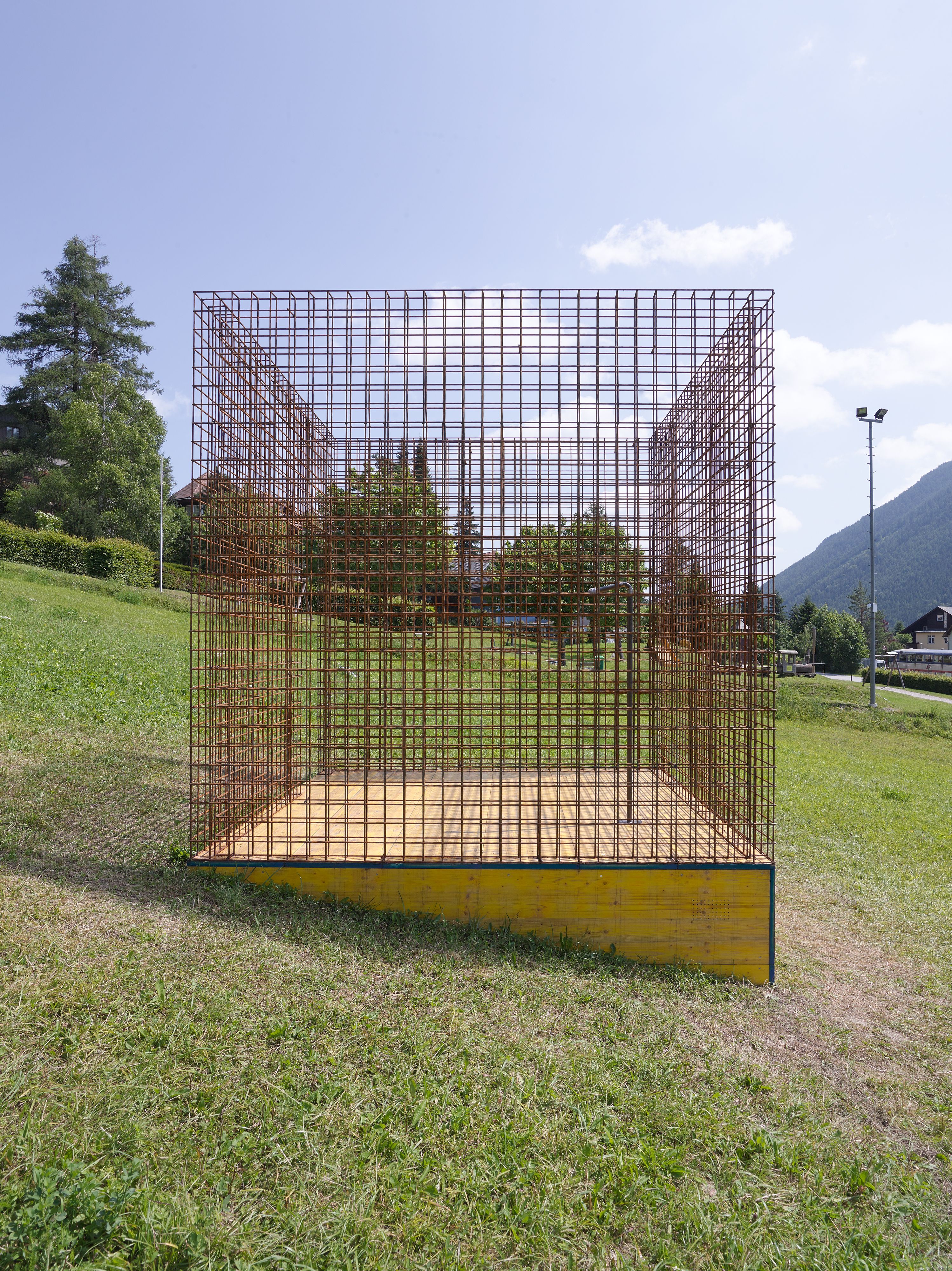
Answer Nature‘s Call, 2021
Room-sized installation (3 x 3 x 3 m), various materials and techniques
Some voices have faded a long time ago and are no longer audible to us. Nature’s screams are silent now; spaces have been occupied, many species are gone. In Answer Nature’s Call, Elvedin Klačar addresses global extinction and the decline of nature as a result of urbanization and increasing forestry. On a sledding hill, the ghosts of animals long gone are brought back to the region in the form of voices, almost as if they were inhabiting new bodies. Words are spoken into a speaking trumpet in this airy walk-in sculpture that visitors can looked into from the outside. The human voices are collected, recorded, and transformed. The work is about the urgent need to make the silent call audible. The physical displacement raises our awareness, as sounds ring out that let us imagine, and remember, beings from the past.
Anna Daučíková
In the Interstices

In the Interstices, 2021
Two-channel video projection, loop, 5 min 55 sec
At one point, these rooms were full of life and the halls were teeming with people, all ruled by decorum. In her video essay, Anna Daučíková explores the now empty Südbahnhotel. She takes
stories from the past and develops them into current fantasies of a »queer invasion.« Bringing these silent rooms back to life, bodies have become fluid, just like the rooms through which they move. The permanence of binary genders begins to slip, creating a permeable structure that breaks with the dominant silence, accepting another language. Well-worn spatial politics, behaviors, and norms are left behind. Through their bodies, these new guests explore the progressive thinking found in old pictures and ideas of the past, mixing and performing motifs from sports, Polynesian men dancing, icons of art history, heathen myths, and Ashtanga yoga, thus lending the old images a new form and making them fluid.
Taus Makhacheva
Tightrope

Tightrope, 2015
Video with color, sound 58 min. 10 sec.
Semmering train station, signaling room
A tightrope walker inches forward over a gorge on a rope between the tips of two rocks. From a distance, it looks as if he is hovering in mid-air. Instead of a balancing pole or a railing, he uses artworks to maintain his balance. In the Caucasus highlands, the works are transported from one side to the other. They are framed and stacked, as if in a storage unit without walls. The video Tightrope by Taus Makhacheva addresses the cultural changes in the Republic of Dagestan—in its art institutions, and collections—by referring to the old Dagestani tradition of tightrope walking. Similar geographical formations can be found in the Semmering, with its rock ledges. As a backdrop, the area thus engages in a conversation with the tightrope walker, letting us imagine that, after leaving the frame of the video, he continues his walk in the Semmering. What could he use for balancing here?
